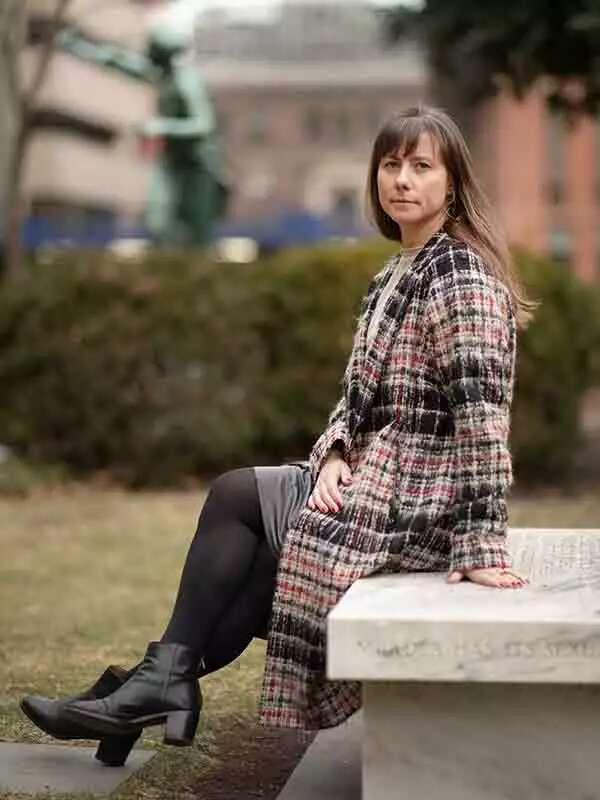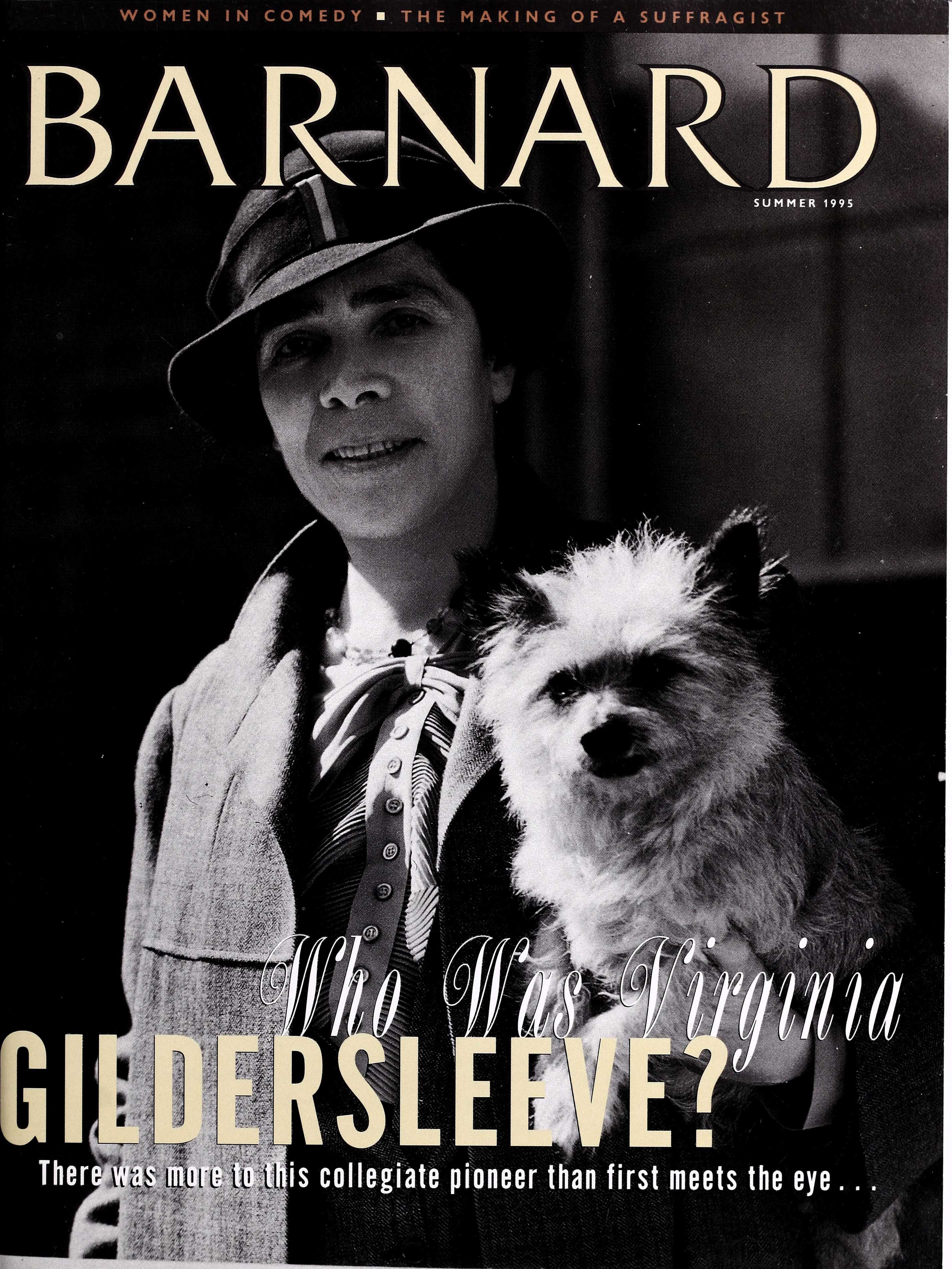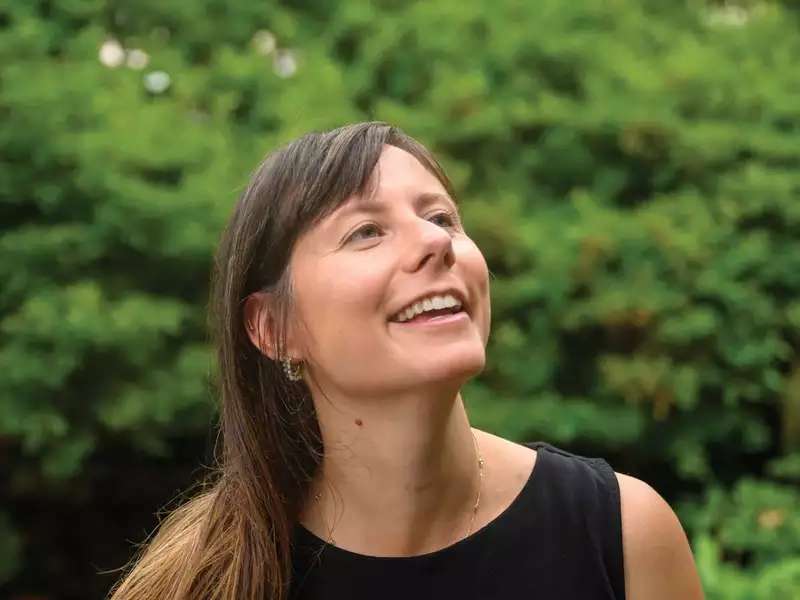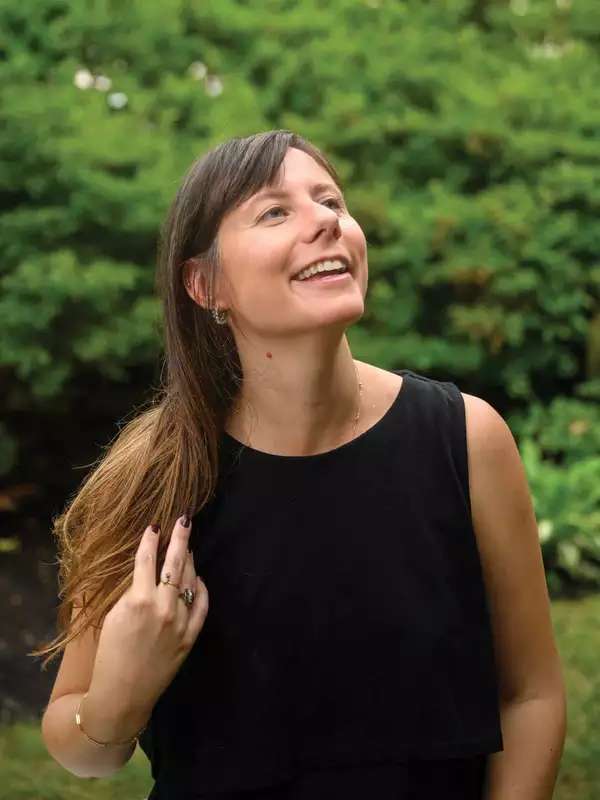

This past March, I received a curious email from a Virginia-based artist named Alan Rubin.
It began with a story about a visit Rubin made in the mid-1990s to see his mother-in-law, Helen Farquhar Lloyd ’37, at her home in Milwaukee. As he tells it, Helen came to Barnard on a four-year scholarship from a small town in upstate New York. During this visit, Rubin came across “a large stack of Barnard Magazines prominently displayed.” As he flipped through the issues, he was drawn to the cover of the Summer 1995 edition, featuring a photograph of Dean Virginia Gildersleeve holding her dog. The headline read: “Who Was Virginia Gildersleeve?” His interest was piqued.
Rubin borrowed the magazine and took it back home to use as a model. From the black-and-white photograph, he created an orange-and-gray-hued portrait of the celebrated dean and professor, whose tenure at Barnard lasted nearly half a century. He then gave the portrait as a Christmas present to his mother-in-law. A few years later, when Helen had passed away, the portrait made its way back to Rubin, and he hung it in his studio.
After receiving this email, I had the chance to speak with Rubin on the phone and learn his own story: A geologist by training, he worked at the U.S. Geological Survey at the National Museum of Natural History and for the Army Map Service in Washington, D.C., before going into the movie theatre business. Along with a few partners, he took over a vacant car dealership in Georgetown and converted it into what became the Biograph Theatre in 1967, screening American and international classics. He’d always had an interest in art, and in the 1990s, after a trip to France, he decided to dedicate himself fully to being a painter. This portrait of Gildersleeve was the second he painted, he told me.
I recount this interesting, if unexpected, exchange because it reminds me of something that is so quintessentially true of Barnard: It has a reach that is long lasting and an impact beyond its physical footprint up in Morningside Heights. Barnard continuously inspires those who’ve spent time on its campus — and even those who haven’t.
The portrait of Gildersleeve is still displayed in Rubin’s studio in rural northern Virginia. But he hopes for this painting to eventually find a home with someone (or some place) that he says “fully appreciates the extraordinary life of Dean Gildersleeve.”
To learn more about Rubin’s work, visit his website: alanrubin.com




